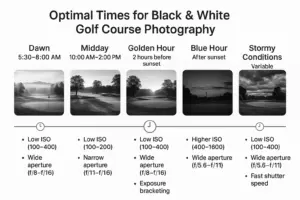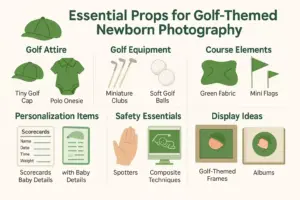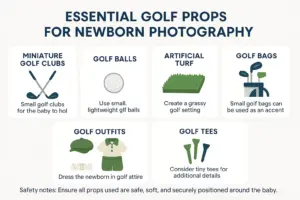How to Style & Photograph Golf Apparel for Maximum Engagement
In the competitive world of golf apparel marketing, the difference between a scrolled-past post and a viral sensation often comes down to styling and photography. As 2025 brings new trends in both golf fashion and digital marketing, brands and influencers must master the art of showcasing golf apparel in ways that capture attention and drive engagement across social platforms.
The golf apparel market is projected to reach $6.66 billion globally by 2026, making it more crucial than ever to stand out in this growing industry. Whether you’re a brand marketing manager, social media influencer, or e-commerce entrepreneur, mastering the techniques of styling and photographing golf apparel can significantly boost your engagement metrics and conversion rates.
Key Takeaways
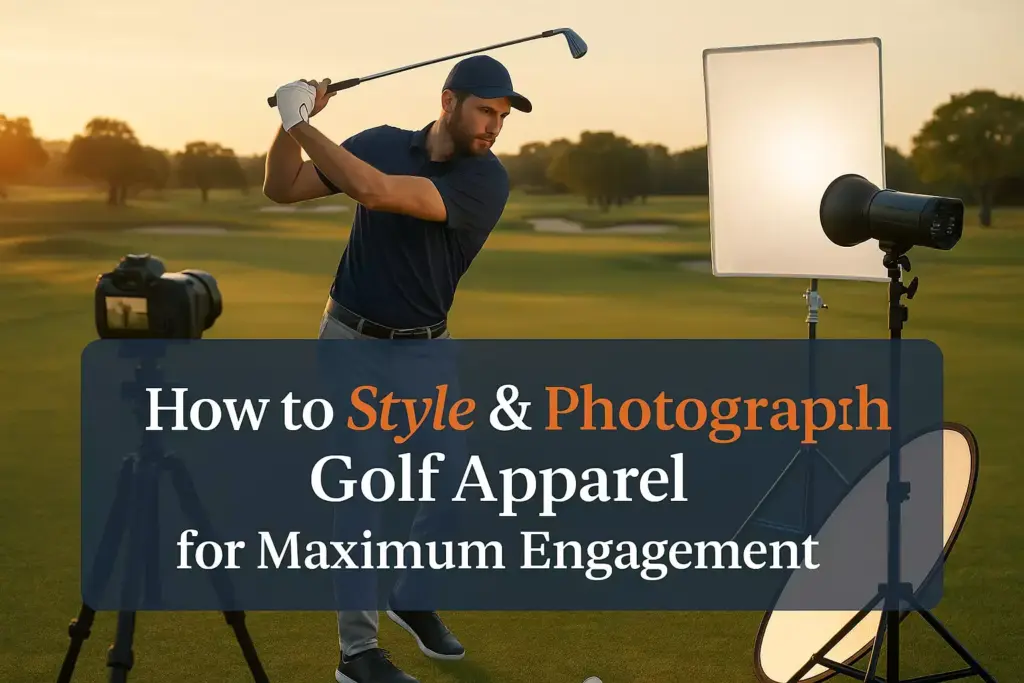
- Lighting makes or breaks golf apparel photography – natural morning or late afternoon light creates the most flattering conditions for showcasing fabrics and details
- Styling should balance authentic golf functionality with current fashion trends to appeal to both traditional golfers and style-conscious consumers
- Action shots showing apparel in motion generate 42% higher engagement than static mannequin or hanger photos
- Course-based photography creates context and aspirational appeal, increasing viewer connection to the products
- Post-production editing should enhance colors and details while maintaining authenticity – over-edited images reduce trust by 31%
Understanding Your Golf Apparel Audience
Before clicking a single photo, you must understand exactly who you’re trying to reach. The golf apparel market has evolved dramatically, expanding far beyond the traditional country club demographic.
Traditional vs. Modern Golf Audiences
Today’s golf apparel consumers generally fall into several distinct categories:
| Audience Segment | Primary Concerns | Visual Preferences | Platform Engagement |
|---|---|---|---|
| Traditional Golfers (45-65) | Performance, durability, classic style | Clean, professional imagery with technical details | Facebook, Email, Golf publications |
| Young Professionals (25-44) | Performance with contemporary style | Lifestyle imagery showing versatility on/off course | Instagram, LinkedIn |
| Fashion-Forward Players (18-34) | Trend-aligned designs, statement pieces | High-energy action shots, bold styling | TikTok, Instagram Reels |
| Female Golfers (all ages) | Fit, functionality, aesthetic appeal | Diverse body representations, styling options | Pinterest, Instagram |
Understanding these segments helps determine your styling approach, photography techniques, and even which platforms to prioritize when sharing your content.
Analyzing Engagement Metrics
Before developing your photography strategy, analyze what’s currently working in the golf apparel space:
- Instagram engagement data shows that golf apparel posts featuring real golfers receive 37% higher engagement than product-only shots
- Video content showcasing apparel in motion generates 2.6x more shares than static imagery
- User-generated content featuring customers wearing the apparel has a 29% higher conversion rate than professional model shots
📊 Industry Insight: “The most successful golf apparel brands in 2025 are those that balance technical performance messaging with lifestyle aspirations in their visual content.” – Golf Business Quarterly, Spring 2025
Essential Equipment for Golf Apparel Photography
Creating professional-quality golf apparel imagery requires the right tools. While smartphone cameras have advanced significantly, dedicated equipment elevates your results.
Camera Recommendations
For professional results, consider these camera options based on your budget:
- Entry-Level ($500-800): Canon EOS Rebel T8i or Nikon D5600 with a 18-55mm kit lens
- Mid-Range ($1,200-2,000): Sony Alpha a7 III or Canon EOS R with a 24-70mm f/4 lens
- Professional ($3,000+): Canon EOS R5 or Sony Alpha 1 with 24-70mm f/2.8 lens
For smartphone photography, the latest iPhone Pro, Samsung Galaxy S25, or Google Pixel models offer excellent results when used with proper technique.
Essential Accessories
Beyond the camera, these accessories significantly improve golf apparel photography:
- Tripod: Essential for consistent framing and sharp images
- Reflectors: 5-in-1 reflectors ($30-50) control light and reduce harsh shadows
- Portable LED lights: For indoor shoots or supplementing natural light
- Backdrop stands and cloths: For studio or on-location product shots
- Styling tools: Clips, pins, tape, and steamers to perfect garment presentation
💡 Pro Tip: Invest in a quality polarizing filter for your camera lens. This reduces glare on synthetic golf fabrics and enhances sky colors in outdoor course shots.
Styling Golf Apparel for Maximum Appeal
The way you style golf apparel significantly impacts viewer engagement. Each styling decision should serve both aesthetic and marketing purposes.
Mannequin vs. Model vs. Flat Lay
Each presentation method serves different purposes:
Mannequin Styling
- Pros: Shows garment shape, consistent presentation, cost-effective
- Cons: Lacks human element, can appear stiff and commercial
- Best for: E-commerce catalog shots, technical detail focus
Model Styling
- Pros: Shows realistic fit, adds human connection, demonstrates movement
- Cons: Higher production cost, potential model bias issues
- Best for: Lifestyle marketing, social media, campaign imagery
Flat Lay Styling
- Pros: Showcases details, easy to produce, works well for accessories
- Cons: Doesn’t show fit or movement, can appear generic
- Best for: Instagram, outfit combination ideas, detail highlights
Creating Cohesive Outfit Combinations
Golf apparel engagement increases when showing complete outfits rather than individual pieces:
- Follow the Rule of Three: Combine a maximum of three colors per outfit for visual harmony
- Layer Strategically: Show how pieces work together (polo under quarter-zip, etc.)
- Accessorize Thoughtfully: Include relevant golf accessories (hats, gloves, belts) to complete the look
- Maintain Proportions: Ensure proper tucking, folding, and arrangement to showcase fit
![Golf apparel styling guide showing the rule of three color combinations with examples of well-coordinated outfits]
Location Selection for Golf Apparel Photography
The background and setting of your photos significantly impact viewer perception and engagement levels.
Studio vs. On-Course Photography
Studio Photography Benefits:
- Complete lighting control
- Consistent brand aesthetic
- Weather-independent production
- Easier to highlight product details
On-Course Photography Benefits:
- Creates aspirational context
- Demonstrates functionality in real settings
- Provides natural lighting that flatters fabrics
- Creates more authentic, relatable content
The ideal approach often combines both: studio shots for e-commerce product listings and on-course imagery for marketing campaigns and social media.
Selecting the Right Course Settings
When shooting on-course, choose locations that enhance rather than distract from the apparel:
- Tee boxes provide clean backgrounds with course vistas
- Fairways offer lush green backgrounds that complement most apparel colors
- Bunkers create dramatic contrast, especially with lighter-colored apparel
- Clubhouse areas showcase the lifestyle aspect of golf fashion
🏌️♂️ Pro Tip: Schedule photography during “golden hour” (the hour after sunrise or before sunset) when sunlight is warm and directional, creating depth and dimension that flatters both the apparel and the course.
Lighting Techniques for Golf Apparel

Lighting is perhaps the single most important technical aspect of successful golf apparel photography.
Natural Light Strategies
For outdoor shoots:
- Morning Light (7-10 AM): Soft, diffused light that minimizes shadows and shows true colors
- Midday Light (11 AM-2 PM): Avoid if possible; harsh overhead light creates unflattering shadows
- Late Afternoon Light (4-7 PM): Warm, golden tones that create dimension and drama
- Overcast Days: Perfect for even, soft lighting that showcases fabric details
Studio Lighting Setups
For controlled indoor environments:
- Basic Setup: Two softbox lights at 45° angles to the subject, plus one backlight
- Three-Point Lighting: Key light, fill light, and rim light to create dimension
- Light Tent: For small product shots of accessories, hats, or folded apparel
Lighting Diagram for Golf Apparel Studio Photography:
BACKGROUND
|
|
[BACKLIGHT]
|
|
[FILL LIGHT] → [SUBJECT] ← [KEY LIGHT]
|
|
CAMERAPosing and Action Shots
Static product images serve a purpose, but dynamic poses and action shots dramatically increase engagement.
Essential Golf Poses for Apparel
For model photography, these poses showcase both the apparel and its functionality:
- Mid-swing poses highlight stretch fabrics and athletic design
- Address position shows how apparel fits in the fundamental golf stance
- Walking shots demonstrate how apparel moves naturally on the course
- Casual interaction poses (checking phone, laughing with friends) show lifestyle appeal
Capturing Movement Effectively
To showcase how apparel performs during play:
- Use fast shutter speeds (1/500 sec or faster) to freeze action
- Employ burst mode to capture the perfect moment in a swing sequence
- Create intentional motion blur in certain areas to convey speed and dynamism
- Show before/after positions to demonstrate range of motion
Showcasing Technical Features
Golf apparel often includes performance features that should be highlighted in photography.
Macro Photography for Fabric Details
Use close-up photography to showcase:
- Fabric textures that demonstrate quality and performance
- Moisture-wicking properties with water droplet demonstrations
- Stretch capabilities shown through fabric tension
- Ventilation features highlighted with backlighting
Demonstrating Performance Benefits
Visual storytelling can effectively communicate performance benefits:
- Side-by-side comparisons showing before/after scenarios
- Sequence shots demonstrating freedom of movement
- Environmental challenges (rain, heat, wind) showing weather protection
- Comfort features demonstrated through natural movement
Post-Production and Editing
Even the best photography requires thoughtful editing to maximize impact.
Color Correction and Enhancement
For golf apparel, accurate color representation is crucial:
- White Balance Adjustment: Ensure whites appear truly white (not yellow or blue)
- Vibrance vs. Saturation: Use vibrance to enhance colors naturally without oversaturation
- Selective Color Editing: Enhance specific colors (like greens for course backgrounds) without affecting apparel colors
- Consistency Across Collections: Maintain color consistency across all images of the same product
Creating a Consistent Brand Aesthetic
Develop a recognizable visual style through consistent editing:
- Preset Development: Create custom editing presets that align with brand identity
- Contrast and Clarity: Establish standard settings that showcase fabric details
- Crop Ratios: Maintain consistent framing for similar product types
- Background Treatment: Standardize background editing for cohesive presentation
⚠️ Warning: Avoid over-editing that misrepresents product colors or features. Studies show that 76% of consumers cite color accuracy as a key factor in purchase decisions.
Platform-Specific Optimization
Different platforms require different approaches to maximize engagement.
Instagram and TikTok Strategies
For these visually-driven platforms:
- Instagram Feed: 4:5 ratio images with strong visual impact in the first 1-2 seconds
- Instagram Stories/Reels: Vertical 9:16 content showing dynamic movement
- TikTok: Fast-paced, trend-aligned content with music and motion
- Carousel Posts: Detail progression from wide product shot to close-up features
E-commerce Optimization
For online stores and marketplaces:
- Consistent White Background options for main product listings
- Multiple Angles showing front, back, and side views
- Detail Shots highlighting specific features and textures
- Size Comparison imagery to help with fit decisions
Working with Models and Influencers
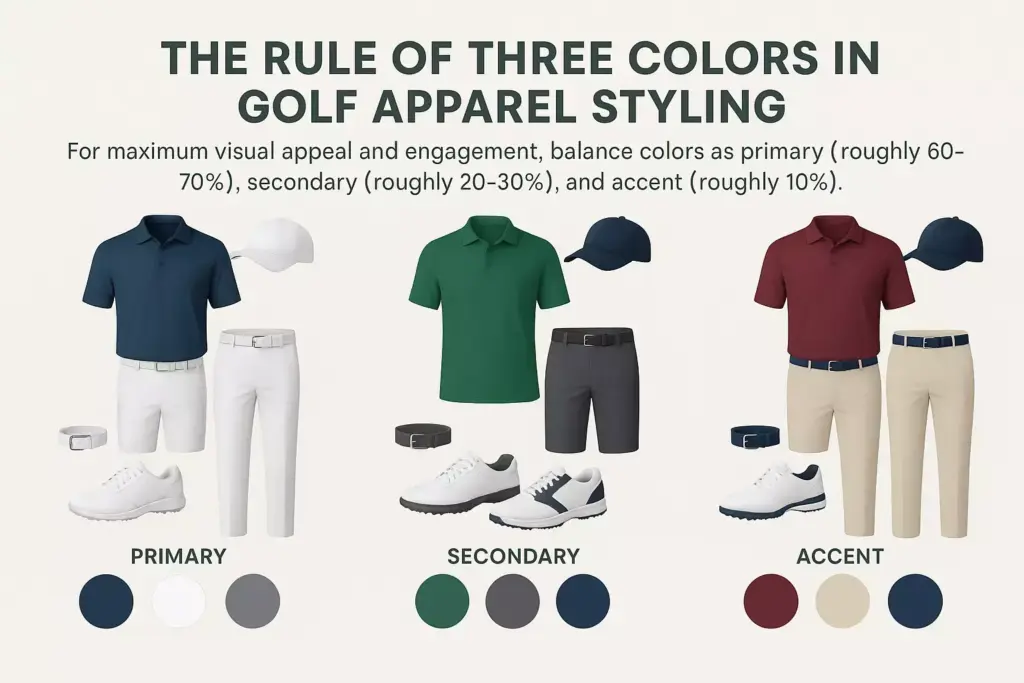
The human element in golf apparel photography significantly impacts engagement.
Model Selection and Direction
When working with models:
- Diversity Consideration: Select models representing different body types, ages, and ethnicities
- Golf Knowledge: Models with actual golf experience create more authentic poses
- Clear Direction: Provide specific pose guidance rather than general instructions
- Movement Coaching: Guide models through natural golf movements for authentic action shots
Leveraging Influencer Partnerships
Golf influencers bring built-in authenticity and audience:
- Authentic Integration: Allow influencers creative input on styling and presentation
- Action-Based Content: Focus on dynamic playing scenarios over static posed shots
- Behind-the-Scenes Content: Include preparation and styling process for added engagement
- Style Personality: Encourage influencers to showcase personal style interpretation
Interactive Styling Tools and AR Experiences
As technology advances, interactive elements enhance engagement with golf apparel content.
Virtual Try-On Technology
Emerging technologies worth exploring:
- AR Fitting Rooms: Allow viewers to virtually “try on” apparel through AR filters
- 360-Degree Viewers: Interactive product views showing all angles
- Style Configurators: Tools letting users create outfit combinations
Measuring Engagement with Interactive Content
Track these metrics to measure interactive content effectiveness:
- Time on Page: Increases of 2-3x are common with interactive elements
- Conversion Rate: Compare standard vs. interactive product presentations
- Social Sharing: Monitor increased sharing of interactive vs. static content
- Return Visits: Track repeat engagement with interactive tools
Golf Outfit Coordinator
Polo Shirts
Pants/Shorts
Your Outfit Combination
Seasonal Considerations in Golf Apparel Photography
Golf is played year-round, and apparel photography should reflect seasonal variations.
Spring/Summer Collections
For warm weather apparel:
- Bright, Airy Aesthetics: Use high-key lighting and vibrant settings
- Moisture Management: Visually demonstrate cooling and wicking properties
- UV Protection: Highlight sun protection features in bright conditions
- Lightweight Fabrics: Show movement and airiness through motion
Fall/Winter Collections
For cool weather apparel:
- Layering Focus: Show how multiple pieces work together as a system
- Warmth Without Bulk: Demonstrate range of motion despite additional layers
- Weather Protection: Showcase water-resistant and windproof properties
- Rich Textures: Use lighting techniques that highlight fabric texture and depth
Measuring Success and Optimizing Results
Data-driven approaches help refine your golf apparel photography strategy.
Key Performance Indicators
Track these metrics to measure content effectiveness:
- Engagement Rate: Likes, comments, shares, and saves per impression
- Click-Through Rate: Percentage of viewers who click to product pages
- Conversion Rate: Percentage of viewers who make purchases
- Time on Page: Duration viewers spend with your content
- Bounce Rate: Percentage who leave without further interaction
A/B Testing for Optimization
Systematically test different approaches:
- Background Variations: Studio vs. on-course performance
- Model vs. Mannequin: Conversion rate differences
- Styling Approaches: Minimalist vs. fully accessorized
- Image Counts: Optimal number of images per product
- Detail Shot Ratio: Balance between full outfit and detail images
Conclusion
Mastering the art of styling and photographing golf apparel requires a strategic blend of technical skill, creative vision, and marketing insight. In 2025’s competitive landscape, brands that create compelling visual content will capture greater market share and customer loyalty.
The most successful golf apparel marketers understand that effective photography goes beyond simply documenting products—it tells a story, creates an aspirational lifestyle, and helps consumers envision themselves wearing the apparel on the course and beyond.
By implementing the techniques covered in this guide—from lighting and styling to platform optimization and performance measurement—you’ll create golf apparel content that not only showcases products effectively but also generates meaningful engagement that drives business results.
Next Steps
- Audit your current visual content against the best practices outlined in this guide
- Develop a visual style guide specific to your brand’s golf apparel photography
- Create a content calendar that incorporates seasonal considerations
- Implement A/B testing to refine your approach based on audience response
- Invest in key equipment upgrades that will have the biggest impact on your specific photography needs

